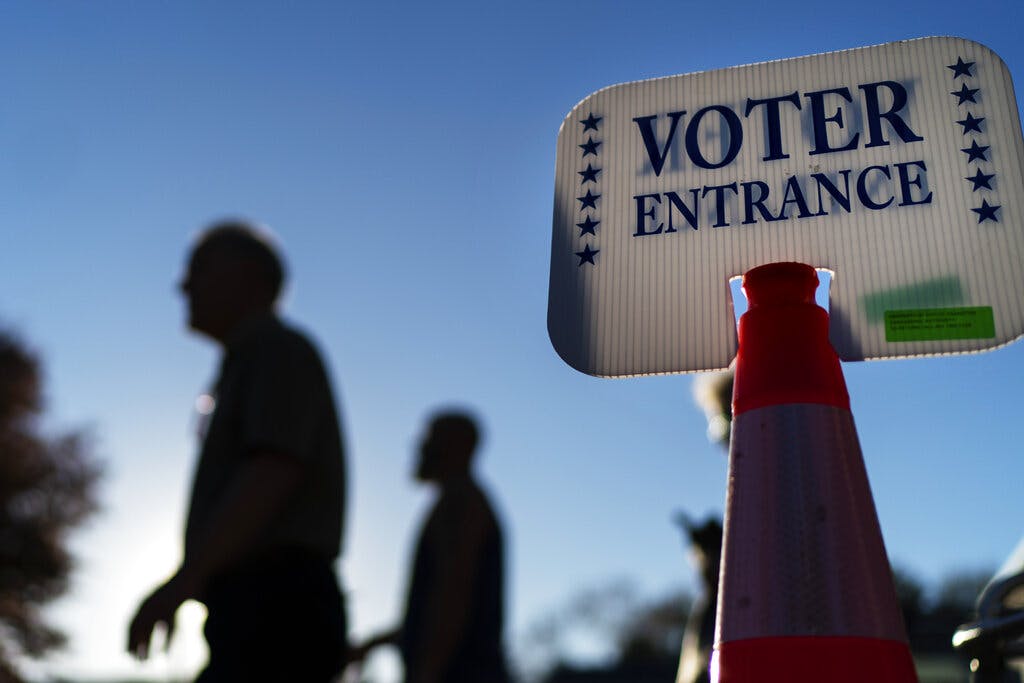Young Voters Are Abandoning American Political Parties in Droves
The exodus is confounding because, at least in recent elections, younger voters have also been voting at higher rates than ever before.

Fueled by a growing economic and political conflict between millennials and baby boomers, younger voters are leaving political parties at dramatic rates — and the Republican Party is seeing the worst of it.
A professor at Arizona State who is co-director of the Center for an Independent Sustainable Democracy, Thom Reilly, said younger voters — especially millennials and Generation Z — are at the forefront of the trend.
“One of the things driving this is the phenomena of young voters that don’t want to be associated with either of the two parties,” Mr. Reilly told the Sun. “People are leaving the two-party system at pretty alarming rates.”
The exodus is confounding because, at least in recent elections, younger voters have also been voting at higher rates than ever before. In 2018, more turned out than at any other time since the data have been tracked, and 2022 is close behind.
“We’ve seen a large increase in young people that are participating,” Mr. Reilly said, adding that the 2022 election “wasn’t a red wave or a blue wave, it was an independent wave.”
Gallup polling backs up the trend. Some 41 percent of Americans now identify as independent, whereas 28 percent of voters identify as Republican and 28 percent as Democrats.
A report from Gallup over the summer said Gen X and millennial voters were behind its findings. About 44 percent of Gen X and 52 percent of millennials identify as independent. Gen Z, only a portion of which is old enough to vote, is also majority independent, at 52 percent.
“Many people associate as an independent with a small ‘i’ — they have a disdain for the two-party system and they don’t want to choose a third party,” Mr. Reilly said. “It would be hard to pivot to a third party.”
Although both of the main parties have lost support to the independents, Gallup data show that, particularly in younger generations, Republicans have suffered the most.
Thirty-five percent of baby boomers identify as Republicans compared to 17 percent of Gen Z. Support for Democrats has remained comparatively stable, with 32 percent of baby boomers identifying as Democrats compared with 31 percent of Gen Z voters.
A recent analysis of survey and election data by the Financial Times’s John Burn-Murdoch found that millennials, unlike previous generations, aren’t becoming more conservative as they age. They’re actually becoming more left-leaning.
This aligns with 2022 exit polling, with voters aged 18 to 29 — Gen Z and younger millennials — preferring Democrats by 28 points. Voters aged 30 to 44 — the older millennials and the youngest Gen Xers — preferred Democrats by only 4 points.
A professor of political science and social data analysis at Pennsylvania State University and author of “Generation Gap: Why the Baby Boomers Still Dominate American Politics and Culture,” Kevin Munger, suggests that these changes aren’t due to a passing party preference but can instead be attributed to economic trends.
According to Mr. Munger, the rising cost of education, health care, and housing, combined with more liberal attitudes on a variety of social issues, have pushed millennials toward more left-leaning candidates, while baby boomers have become more conservative with age and wealth.
“Baby boomers played by the rules,” Mr. Munger told the Sun. “They worked hard and were appropriately awarded.”
Today, though, the sort of financial stability older generations enjoyed is less accessible for millennials and younger generations, which has delayed or prevented major milestones in life, like buying a home or starting a family. In turn, that may impact these voters’ politics.
Mr. Munger says that most baby boomers don’t understand or are indifferent to how economic changes have made it difficult for younger Americans to make ends meet, leading to a sharp political divide between the generations.
“They know how the system worked, so it makes it incredibly hard for millennials to explain [to boomers] that the world we face is different,” Mr. Munger said. “All [younger generations] want is the same thing that they had, which is to work hard and be appropriately rewarded.”
The biggest issue driving this dynamic, according to Mr. Munger, is the cost of housing, which has become increasingly out of reach for many younger Americans as prices outpaced incomes.
While baby boomers, who were the single largest voting generation for decades, continue to garner much of political world’s attention, Mr. Munger says that the rise of a new generation could be an opportunity for one of the two main parties to make a pivot.
“I don’t think millennials will cast more votes than baby boomers for at least 10 years and maybe 15,” Mr. Munger said. “In terms of party politics it could happen sooner and a big question is, which of the two parties is going to pivot to being more youth-focused sooner — that could have a big impact.”

